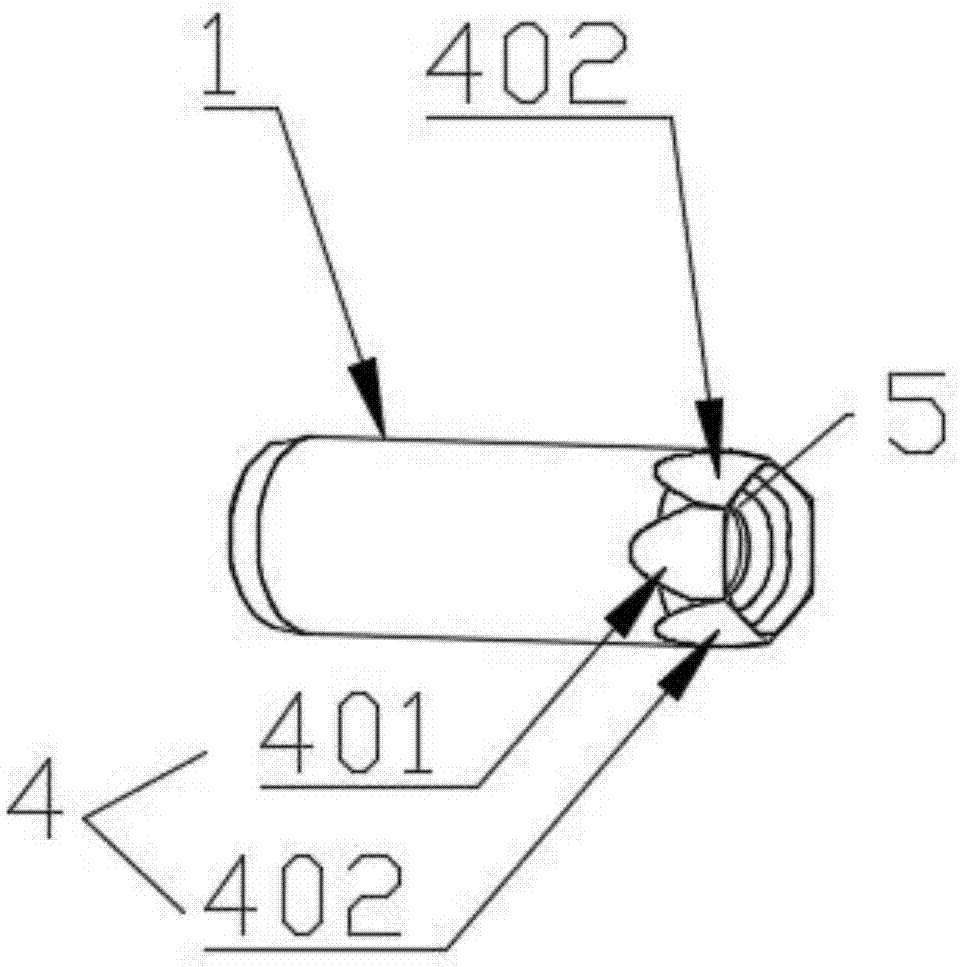Tubular tool for acquiring human vein transplant in minimally invasive manner
A graft and tube-type technology, applied in the field of medical tools, can solve the problems of expensive imported equipment, expensive equipment, and large subcutaneous trauma, and achieve the effects of avoiding skin incisions, reducing medical expenses, and fast operation
- Summary
- Abstract
- Description
- Claims
- Application Information
AI Technical Summary
Problems solved by technology
Method used
Image
Examples
Embodiment 1
[0020] see Figures 1 to 4 , a tubular cutter for obtaining minimally invasive human vein grafts, comprising a cutter head 1, a tunnel tube 2 and a handle 3, the cutter head 1, tunnel tube 2 and handle 3 are connected in sequence, and one end of the tunnel tube 2 is inserted into the knife Inside the head 1, the other end is inserted into the handle 3; the cutter head 1 is a metal cutter head 1, and the cutter head 1 is tubular, that is, a ring-shaped cutter head, and one end of the cutter head 1 is provided with a blade 4, and the The processing of the blade 4 is to thin the end of the tubular cutter head into a blade from the inside to the outside, or from the outside to the inside. Seen from the end face direction of the blade 4, the blade 4 forms a polygon, that is, a multi-faceted blade , the blade 4 is made up of a sharp blade 401 and a blunt blade 402, that is, the sharp blade 401 is a sharper blade, and the blunt blade 402 is a blade that is difficult to cut, and the s...
Embodiment 2
[0023] The difference between this embodiment and Embodiment 1 is that, viewed from the end face direction of the blade 4, the blade 4 is circular, and the blades 4 are all composed of a sharp blade 401, which is easier to cut when the tissue around the vein needs to be cut.
Embodiment 3
[0025] The difference between this embodiment and Embodiment 1 is that, viewed from the end face direction of the blade 4, the blade 4 forms a regular octagon, that is, there are eight sides of the blade 4, the number of sharp blades 401 is four, and the number of blunt blades 402 is four. for four.
[0026] To sum up, using the tubular cutter for minimally invasive harvesting of human vein grafts of the present invention can obtain vein grafts minimally invasively, avoiding huge skin incisions, and the operation is fast, simple, efficient, time-saving and labor-saving, and relatively Greatly reduce medical expenses and reduce discomfort symptoms of patients. The present invention can cut off the peripheral branches of the vein while avoiding long skin incisions and relatively large subcutaneous tissue trauma, and can separate the vein from the surrounding tissue and protect the trunk of the vein graft through the rotary advancement of the tubular cutter. And the main vein is...
PUM
 Login to View More
Login to View More Abstract
Description
Claims
Application Information
 Login to View More
Login to View More - R&D
- Intellectual Property
- Life Sciences
- Materials
- Tech Scout
- Unparalleled Data Quality
- Higher Quality Content
- 60% Fewer Hallucinations
Browse by: Latest US Patents, China's latest patents, Technical Efficacy Thesaurus, Application Domain, Technology Topic, Popular Technical Reports.
© 2025 PatSnap. All rights reserved.Legal|Privacy policy|Modern Slavery Act Transparency Statement|Sitemap|About US| Contact US: help@patsnap.com



